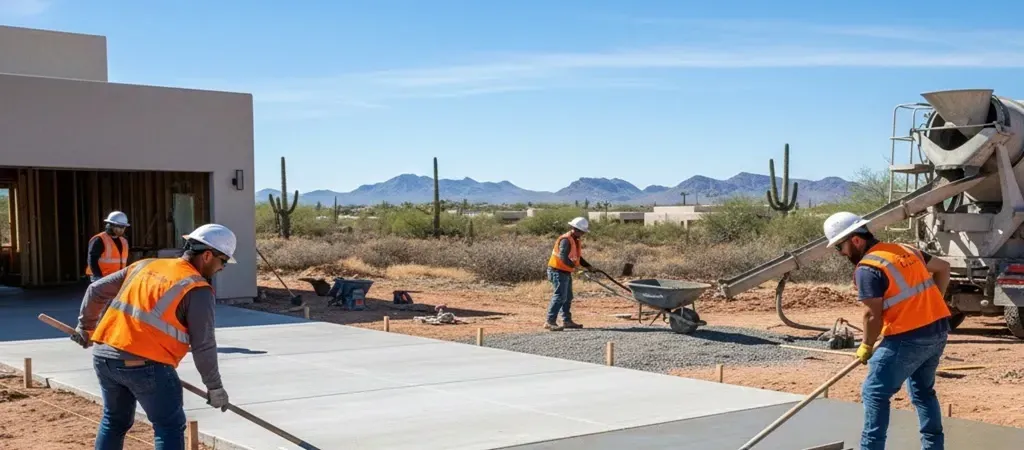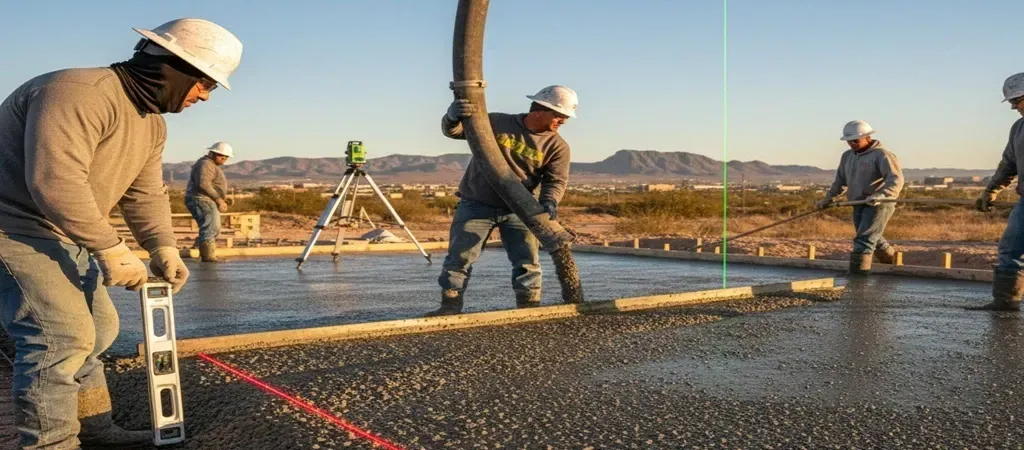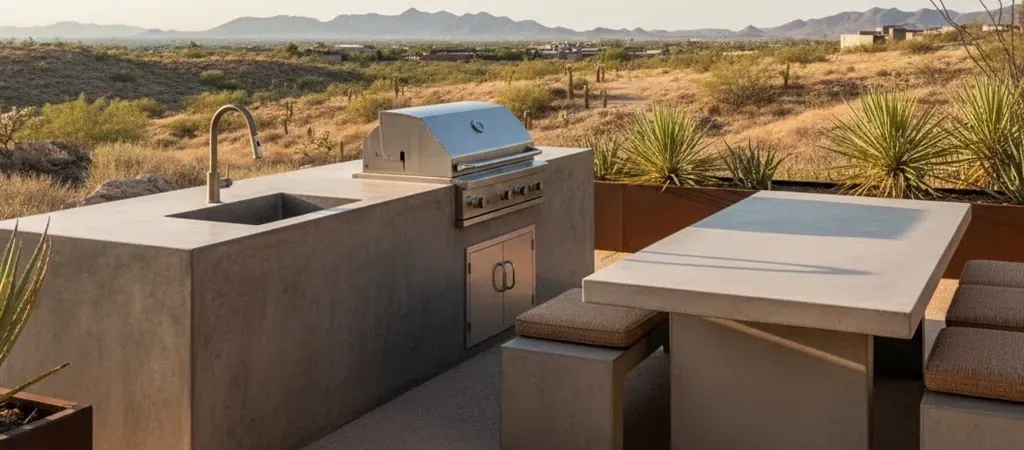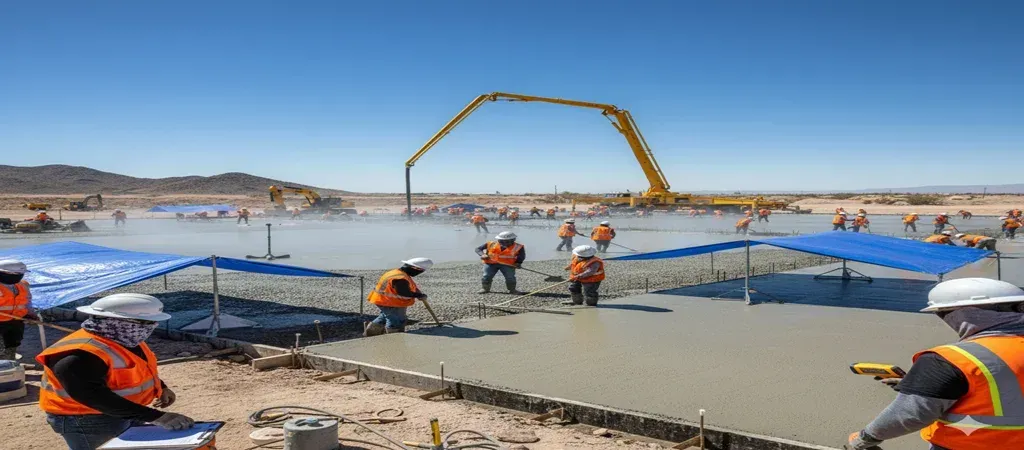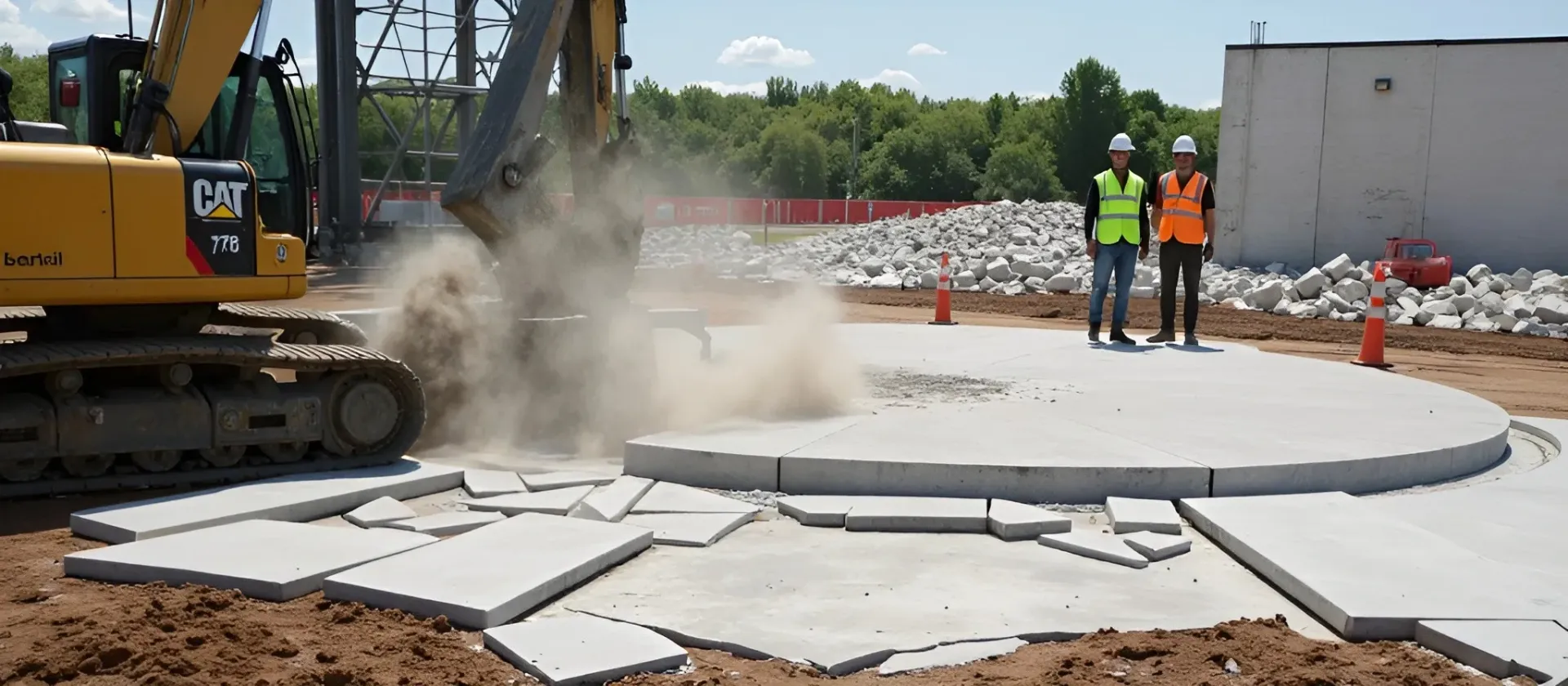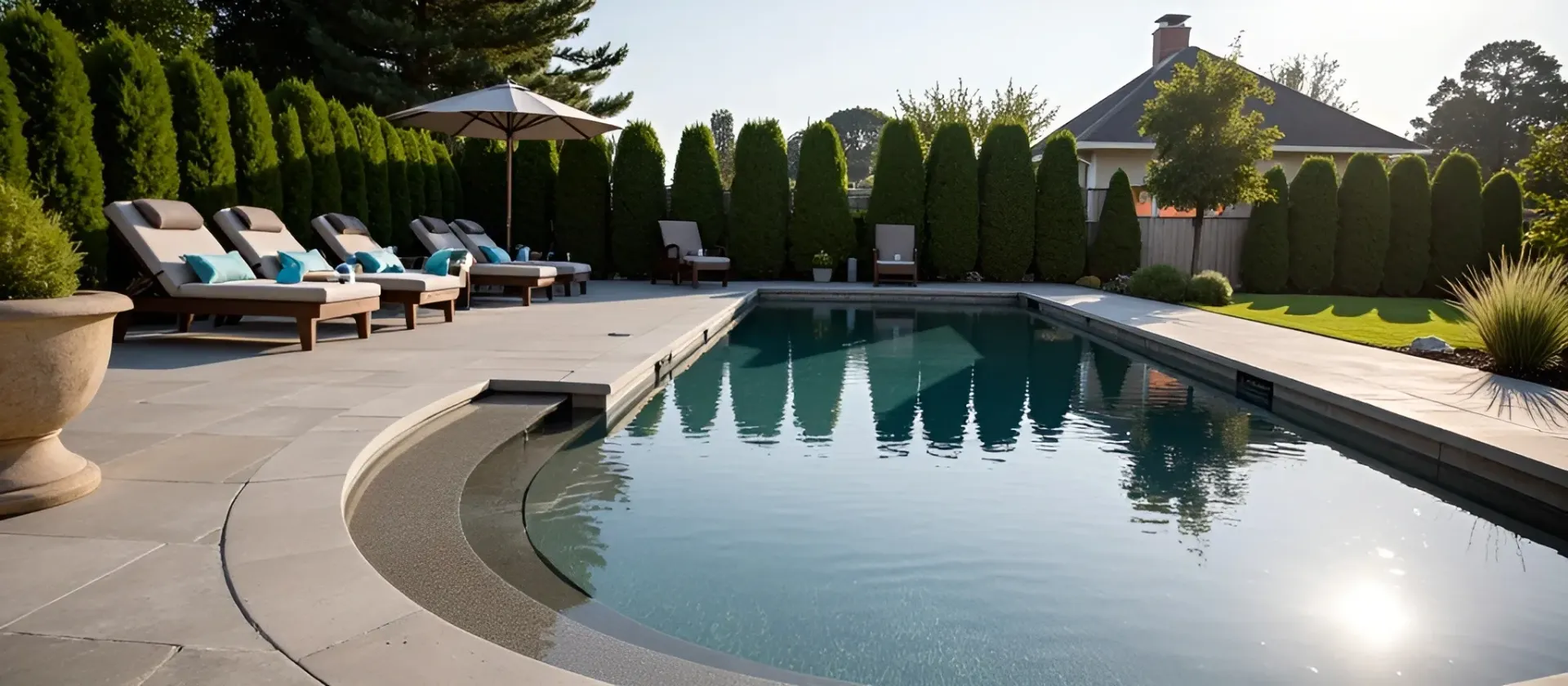How Weather Conditions Affect Concrete Pouring and Curing
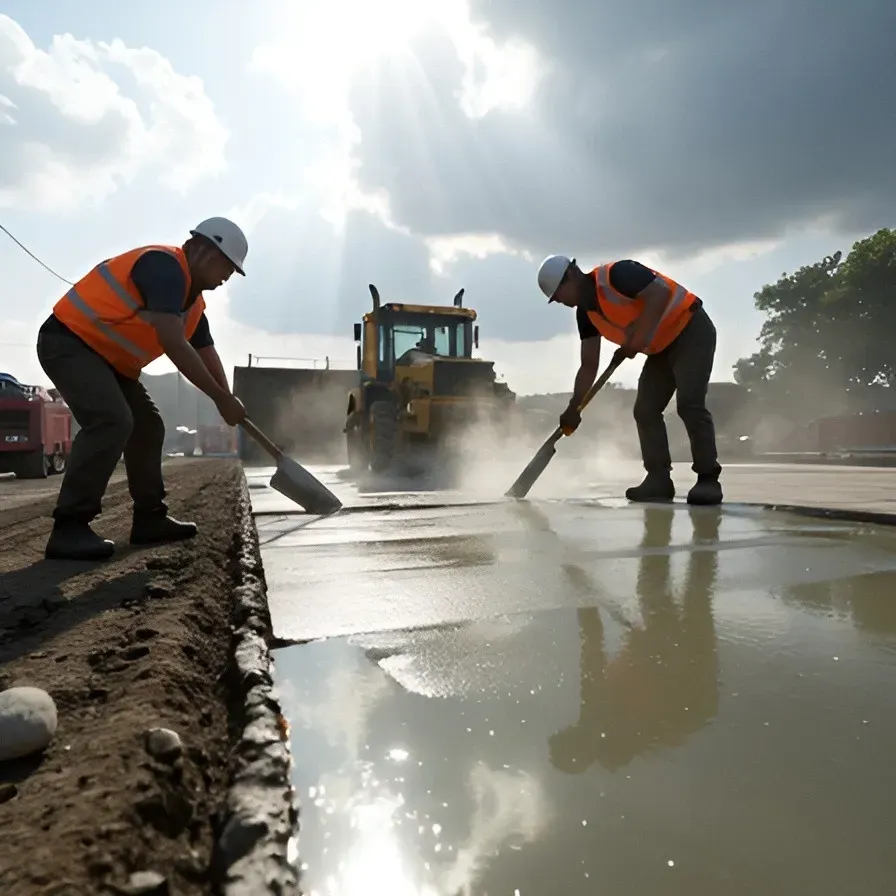
Concrete is tough, no doubt. It’s the backbone of buildings, roads, and bridges. But even concrete has a weak spot—weather.
Ever seen shrinkage cracks in concrete? Blame the weather. It can mess with how concrete is poured and cured. Let’s break down how weather causes problems. And we’ll share simple tips to protect your next project.
What Happens During Concrete Pouring and Curing?
Before we talk about weather issues, let’s understand the basics. Pouring concrete means mixing water, cement, sand, and aggregate, then placing it into the forms. Sounds simple, right? Not quite.
Once poured, concrete needs time to cure. This is when it hardens and gains strength. The magic happens through hydration. A chemical reaction between water and cement. But hydration is sensitive. External factors, like weather, can mess it up. If the weather doesn’t play nice, your concrete won’t perform as it should.
For more on how to ensure proper strength and resistance over time, check out our guide to enhancing concrete durability.
How Temperature Throws Concrete Off Balance
Cold Weather: The Big Freeze
Pouring concrete in freezing temperatures can be a disaster. Why? Because the water in the mix can freeze. That causes the concrete to expand and crack. The curing process also slows down in the cold. That means your concrete might not reach its full strength.
What’s the fix? Construction pros often use heated blankets, insulated forms, or even heated enclosures to keep the concrete warm. Using hot water during the mix can also help. Learn more about handling low temperatures and the value of insulated concrete forms in cold climates.
Hot Weather: The Fast and the Furious
On the flip side, high temperatures can cause concrete to dry too quickly. This rapid evaporation is bad news because it prevents proper hydration, leading to weak and brittle concrete. Cracking and surface shrinkage are also common.
The solution? Pour concrete early in the morning. Or late in the evening when it’s cooler. Use sun shades or misting systems. So you can slow down evaporation. You can even add ice to the mix to keep things cool. Yes, ice in concrete!
Humidity: A Sneaky Player
Humidity is the silent player in the concrete game. In high-humidity conditions, evaporation slows down, which might sound good. But it can lead to overly wet surfaces that weaken the mix.
On the other hand, low humidity speeds up moisture loss. This rapid drying causes cracks and a rough surface.
The trick? Use curing compounds or coverings to trap moisture and control the curing process. Think of it as giving your concrete a cozy blanket to snuggle in.
Wind: The Unseen Enemy
Ever noticed how windy days can dry out your skin? The same happens to concrete. Wind sucks moisture from the surface. That leaves it dry and prone to cracking. And the worst part? It happens fast, even before the concrete sets properly.
Combat wind by setting up windbreaks or using plastic sheeting to cover the surface. This creates a shield, letting your concrete cure without interruptions.
Seasonal Tips for Perfect Concrete
Each season brings its own challenges for concrete projects.
Spring and Fall: These are ideal times for concrete work. Temperatures are mild. And there’s less chance of extreme weather messing things up.
Winter: Be ready to battle the cold. Use insulated blankets and heaters. Don’t pour concrete if temperatures are expected to drop below 32°F within 24 hours.
Summer: Plan early-morning or late-evening pours. So you can beat the heat. Keep a spray bottle handy to mist the surface. That prevents it from drying out too fast.
These seasonal tips also align with the insights from our
concrete patio construction guide, which addresses how weather impacts outdoor projects.
Best Practices for Weather-Resistant Concrete
So, how do you ensure your concrete survives no matter the weather? Here’s what the pros from El Paso Concrete Contractors recommend:
- Check the Forecast: Always know what the weather is up to before starting.
- Plan for Protection: Use tarps, blankets, or enclosures to shield your concrete.
- Monitor Moisture Levels: Concrete loves moisture while curing. Keep it hydrated with sprays or curing compounds.
- Control the Temperature: In cold weather, keep it warm. In hot weather, keep it cool. Simple, right?
To go even deeper, take a look at our article on building high-quality concrete driveways, where we share additional weatherproofing strategies for longevity.
Why Weatherproofing Your Concrete Matters
Weather isn’t just a minor inconvenience. It’s a critical factor for concrete quality. Bad weather can cause cracks. Shrinkage. And weak structures. These are ugly. And they’re dangerous too.
But understanding weather helps you adapt. It ensures your concrete is strong and durable. Want to see why more people choose concrete even in harsh weather conditions? Read our take on why concrete is preferred over other patio materials.
Final Thoughts
Concrete is strong. But surprisingly sensitive! Weather can turn a simple project into a disaster.
Temperature, humidity, and wind all affect concrete. Understanding these factors is key to success. With the right knowledge, you can handle any project confidently. So, before pouring concrete, always check the weather.
Is it cold? Hot? Windy? Adjust your approach accordingly. Treat your concrete like a demanding yet rewarding partner. It will thank you by standing strong for decades to come.
